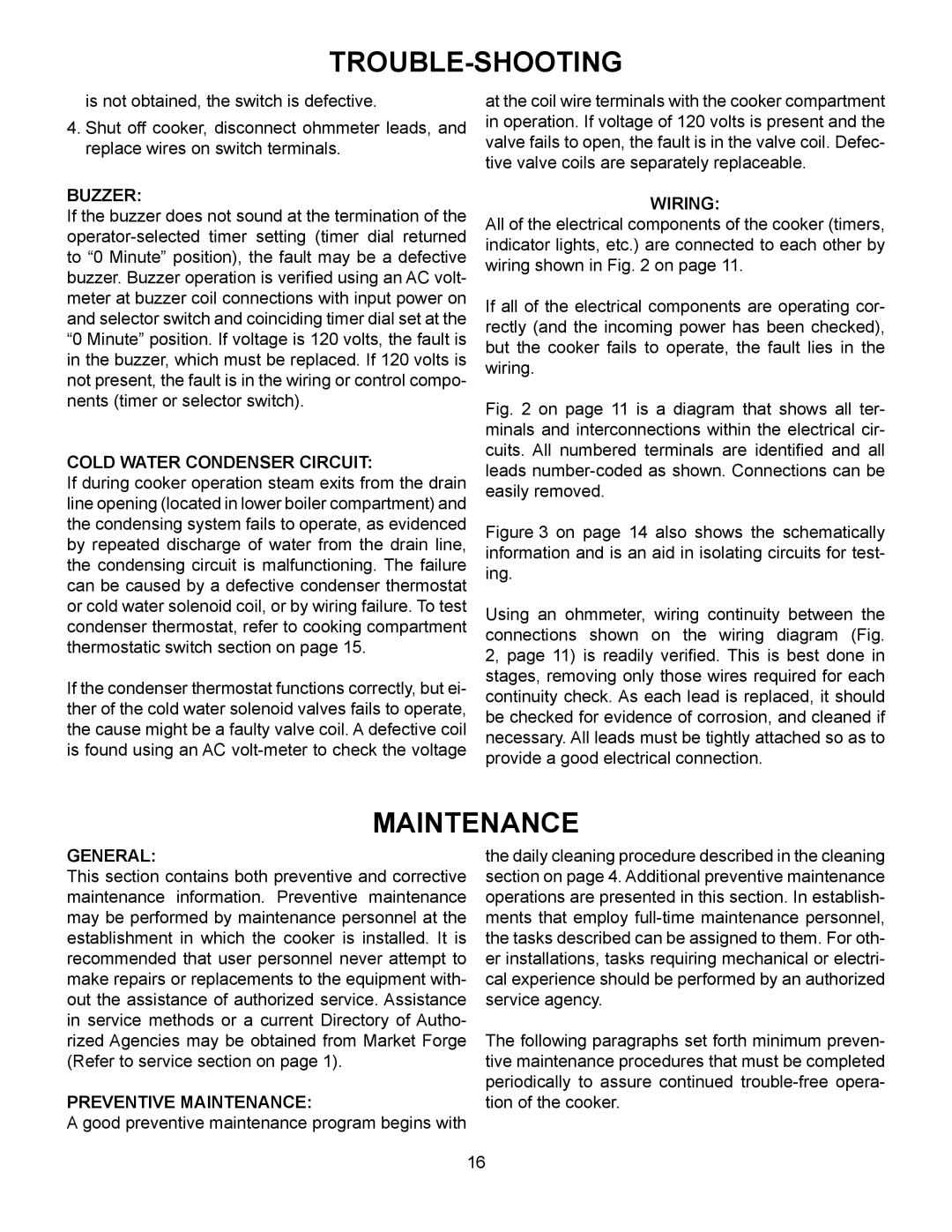TROUBLE-SHOOTING
is not obtained, the switch is defective.
4.Shut off cooker, disconnect ohmmeter leads, and replace wires on switch terminals.
BUZZER:
If the buzzer does not sound at the termination of the
COLD WATER CONDENSER CIRCUIT:
If during cooker operation steam exits from the drain line opening (located in lower boiler compartment) and the condensing system fails to operate, as evidenced by repeated discharge of water from the drain line, the condensing circuit is malfunctioning. The failure can be caused by a defective condenser thermostat or cold water solenoid coil, or by wiring failure. To test condenser thermostat, refer to cooking compartment thermostatic switch section on page 15.
If the condenser thermostat functions correctly, but ei- ther of the cold water solenoid valves fails to operate, the cause might be a faulty valve coil. A defective coil is found using an AC
at the coil wire terminals with the cooker compartment in operation. If voltage of 120 volts is present and the valve fails to open, the fault is in the valve coil. Defec- tive valve coils are separately replaceable.
WIRING:
All of the electrical components of the cooker (timers, indicator lights, etc.) are connected to each other by wiring shown in Fig. 2 on page 11.
If all of the electrical components are operating cor- rectly (and the incoming power has been checked), but the cooker fails to operate, the fault lies in the wiring.
Fig. 2 on page 11 is a diagram that shows all ter- minals and interconnections within the electrical cir- cuits. All numbered terminals are identified and all leads number-coded as shown. Connections can be easily removed.
Figure 3 on page 14 also shows the schematically information and is an aid in isolating circuits for test- ing.
Using an ohmmeter, wiring continuity between the connections shown on the wiring diagram (Fig. 2, page 11) is readily verified. This is best done in stages, removing only those wires required for each continuity check. As each lead is replaced, it should be checked for evidence of corrosion, and cleaned if necessary. All leads must be tightly attached so as to provide a good electrical connection.
MAINTENANCE
GENERAL:
This section contains both preventive and corrective maintenance information. Preventive maintenance may be performed by maintenance personnel at the establishment in which the cooker is installed. It is recommended that user personnel never attempt to make repairs or replacements to the equipment with- out the assistance of authorized service. Assistance in service methods or a current Directory of Autho- rized Agencies may be obtained from Market Forge (Refer to service section on page 1).
PREVENTIVE MAINTENANCE:
A good preventive maintenance program begins with
the daily cleaning procedure described in the cleaning section on page 4. Additional preventive maintenance operations are presented in this section. In establish- ments that employ
The following paragraphs set forth minimum preven- tive maintenance procedures that must be completed periodically to assure continued
16
